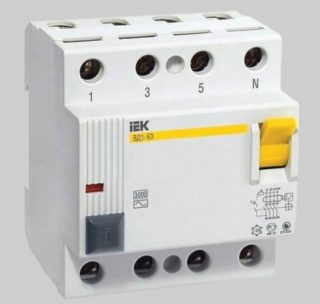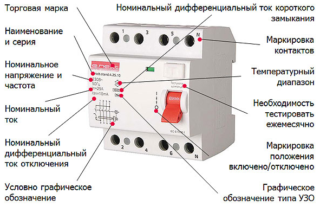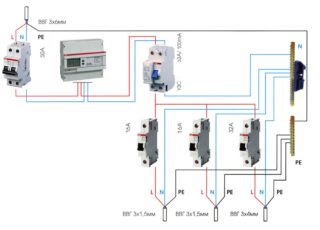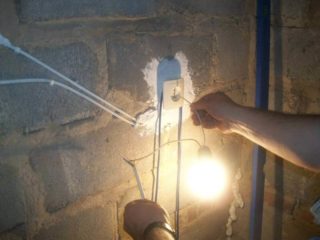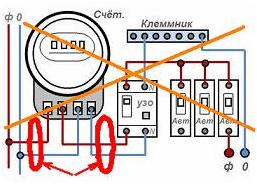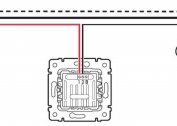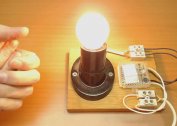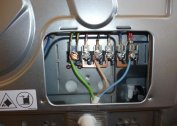In connection with the massive use of electrical appliances in everyday life and at work, there is a need to protect a person from electric shock. Three-phase RCD is a special device that implements this function. The specified unit must be connected using special schemes, which will guarantee the efficiency of its operation.
Purpose and principle of action
The 3-phase RCD is designed to equalize the current that passes through the phase and neutral wires. In the absence of emergency situations, the indicated values are equal. Stable operation of electrical appliances is possible, since oncoming flows in the windings cancel each other out. In case of emergency situations, the protection device turns off the power to electrical appliances. This is observed when the insulation of the wires is violated, which provokes the leakage of charged particles. As a result, the currents passing through the neutral and the phase wire will have different values.
In every house, a situation can occur when an electric current breaks through the body of a washing machine or water heater. When the potential begins to flow to the floor, the 3-phase RCD will react and turn off the power to the devices. Therefore, when using this circuit breaker, you can be sure of your safety.
RCD connection is relevant for powerful electrical appliances in the kitchen and in the bathroom. Condensation is collected on their metal casing, which in the complex forms a potential conductor of electricity.
It is good when a protective shutdown is present on outlets, lamps and low-power household appliances. In the event of an emergency, these consumers are no less dangerous to humans.
Criteria for choosing a three-phase RCD
The principle of operation of all RCDs in a three-phase network is the same, but these devices differ in design and operational characteristics. Therefore, when buying a particular model, you need to consider many nuances.
Sensitivity
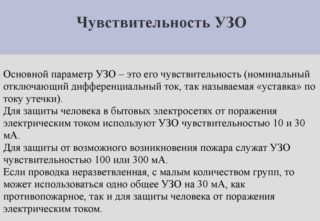 The main operational parameter of the RCD is 3 phases, which displays the period of time through which the protection will trip. It is optimal when the sensitivity of the device is 0.025 s. During this time, an electric current does not have time to cause a cardiac arrest in a person.
The main operational parameter of the RCD is 3 phases, which displays the period of time through which the protection will trip. It is optimal when the sensitivity of the device is 0.025 s. During this time, an electric current does not have time to cause a cardiac arrest in a person.
The RCD can operate with or without an additional power source. In the first case, he directly takes part in the process of opening the electric circuit. The presence of this mechanism increases the cost of the device, but also increases its sensitivity.
In the absence of an additional power source, the RCD trips in response to the differential of the magnetic field.
Current differential
RCDs designed for 3 phases are capable of regulating the value of the differential current at which it trips. In the absence of this function, devices respond standardly to 5 mA. This current indicator clearly indicates the presence of an emergency and the need to turn off the power supply.
Number of terminals
For a three-phase network, it is mandatory to buy 4-pole RCDs. They are equipped with 8 terminals for connecting input and output cables. Three pairs are designed to connect the working phase, one - zero.
Amp Amps
In order for the residual current device to function at any current, it is necessary to choose a model where the number of amperes is significantly higher than that of the machine.
There are universal models on the market. They provide the ability to connect multiple networks simultaneously.Despite this advantage, such units have many disadvantages. They are less sensitive, characterized by a complex wiring diagram, are more expensive. Such models are suitable for enterprises, but not for private use.
Preparing to Connect
Properly completed preparatory and installation work will ensure the stable operation of the RCD.
Three-phase network connection diagrams
When installing an RCD, the following working schemes are used:
- Complete disconnection of the circuit. One unit has the ability to de-energize all electricity consumers in the event of an emergency.
- Partial shutdown of devices. When emergencies occur, only some consumers are de-energized.
The first connection scheme is used in apartment buildings. Installation of the device is carried out near the electricity meter. If the RCD works, the whole house is de-energized.
When using the second scheme, the protective mechanism is installed on a piece of electrical wiring going to a particular room. Since all the devices are connected in series to the circuit, when the RCD trips, only the “problematic” consumer will turn off, while others will continue to function.
The second version of the scheme can be implemented in another way. The installation point of the RCD becomes the beginning of a serial connection to the wiring, which allows the selective operation of the unit to certain groups of consumers. Also, the protective mechanism can be installed directly in front of the output device.
The need for grounding
Old power grids belong to the tn-c system, where there is no neutral conductor to turn on the ground. In this case, protection must be provided separately for the home or equipment, which ensures safe current diversion. In the absence of grounding, it is prohibited to install a 4-pole RCD.
The correct scheme for connecting to the electrical network provides for the following rules:
- The grounding conductor only connects to the output cable. Direct RCD connection is not allowed.
- If there is a single-phase network, you cannot use a four-pole device.
- Connection to a network of type B3 is prohibited.
Grounding conductor is a separate element. The absence of additional terminals in the RCD for its connection only indicates this.
Connecting a residual current device
It is not difficult to install an RCD, having basic information about the operation of electrical equipment. The manufacturer attaches a technical passport to each device. It indicates the recommended wiring diagrams to use during installation.
Zero phase search
Determining the zero phase is very simple empirically. You need to take two wires and connect them to the ends of the bulb holder. Its tanning is observed if it is connected to a phase. In other cases, nothing will happen.
Connecting the bulb to two phases at the same time is allowed to be carried out for a short period of time. Such a circuit can also be closed only for a short period. Otherwise, there is a high probability of tripping of the circuit breaker.
Phase connection
If it was possible to find zero, you must immediately connect it to the corresponding terminals. The remaining three wires are the working phases. They are connected in any convenient way, which does not affect the functioning of the RCD.
After the installation is completed, it is necessary to check the system performance. To do this, a tester is launched, which is standard on the device.
Output device connection
Connecting multiple outlets to one RCD occurs only in a parallel way. To accomplish this, each core is divided into the desired number of wires.If you do not adhere to such an installation scheme, the device will not be able to fully operate and operate when emergency situations occur.
Errors during installation of RCD
To ensure stable and safe operation of the power supply network, the following errors must be avoided:
- The input terminals of the RCD are connected to the network after a special machine. Direct joining is strictly prohibited.
- It is necessary to correctly connect and not confuse the zero and phase contacts. To facilitate this task, special designations are present on the device case.
- In the absence of a grounding conductor, it is strictly forbidden to replace it with a wire thrown over a water pipe or radiator.
- When buying devices pay attention to their main performance characteristics, current values. If the line is designed for 50 A, the device should have a minimum of 63 A.
When performing installation, it is extremely important to comply with electrical safety rules. Before starting the installation, the RCD disconnects the network. Before starting the device, check the correct installation of the system elements.
